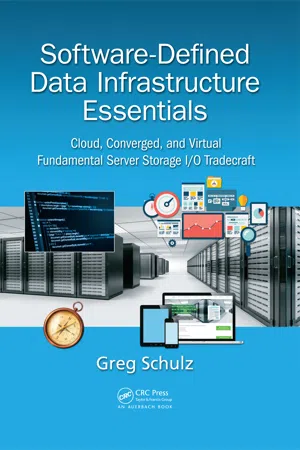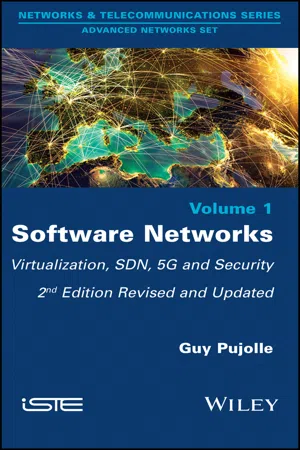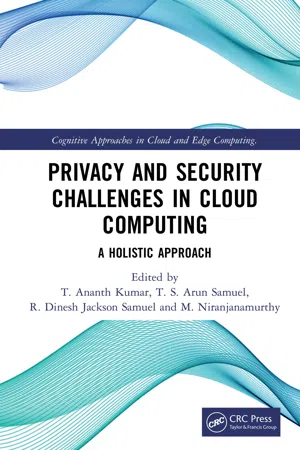Hypervisors
Hypervisors are software or firmware that create and run virtual machines (VMs) by separating the physical hardware from the operating system. They enable multiple operating systems to run on a single physical machine, allowing for efficient use of resources and improved flexibility in managing and deploying computing environments. Hypervisors are commonly used in server virtualization and cloud computing.
3 Key excerpts on "Hypervisors"
- eBook - ePub
Software-Defined Data Infrastructure Essentials
Cloud, Converged, and Virtual Fundamental Server Storage I/O Tradecraft
- Greg Schulz(Author)
- 2017(Publication Date)
- Auerbach Publications(Publisher)
...Hypervisors also support a pass-through mode, where guest operating systems and their applications along with device drivers can access an actual physical device without going through the hypervisor software stack per se. Figure 4.17 shows, from left to right, a traditional server, type-1 and type-2 Hypervisors, and containers. The containers example in this figure could exist as a guest virtual machine as well. Type-2 Hypervisors shown in Figure 4.17 include Microsoft Hyper-V, which supports guest OS or virtual machines with Windows Server as the underlying host operating system. In addition to Hyper-V, other type-2 Hypervisors include VMware Workstation (not to be confused with a virtual desktop), Oracle Virtual box, and others. The advantage of type-2 is the ability to leverage underlying operating systems while sharing resources. Figure 4.17 Bare metal, type-1 and type-2 Hypervisors, and container services. Also shown in Figure 4.17 are containers such as Docker, LXC, VMware VIC and Photon, and Microsoft Nano, among others. Not to be confused with physical servers densely packed into a 40-ft intermodal shipping or other container, Docker and other containers function as micro-servers. These containers take a step beyond sharing physical resources such as with a hypervisor by leveraging common software binary libraries and operating services. The result is a smaller footprint to run application software that does specific tasks, yet that does not need a full-blown operating system as with a type-1 or type-2 hypervisor. Type-1 Hypervisors (Figure 4.17) run bare metal on physical servers that in turn host virtual VM and their guest operating systems...
- eBook - ePub
Software Networks
Virtualization, SDN, 5G, and Security
- Guy Pujolle(Author)
- 2020(Publication Date)
- Wiley-ISTE(Publisher)
...The handover of streams from one software network to another must take place via a secure gateway outside of the data plane. This is absolutely necessary to prevent contamination between networks, such as a complete shutdown for a network attacked, for example, by a distributed denial of service (DDOS). 1.2. Hypervisors and containers Clearly, virtualization needs hardware, which can be standard. We speak of commodity hardware (white box), with open specifications, produced en masse to achieve particularly low prices. We will talk further about it in the chapter on open source software (Chapter 4). There are various ways of placing virtual machines on physical equipment, and they can be classified into three broad categories, as shown in Figures 1.4 – 1.6. The first two figures correspond to Hypervisors and the third figure corresponds to containers. Figure 1.4. Paravirtualization. For a color version of the figure, see www.iste.co.uk/pujolle/software2.zip A paravirtualization hypervisor is a program that is directly executed on a hardware platform and which hosts virtual machines linked to operating systems that have been modified so that the virtual machines’ instructions are directly executed on a hardware platform. This platform is able to support guest operating systems with their drivers. The classic Hypervisors in this category include Citrix Xen Server (open source), VMware vSphere, VMware ESX, Microsoft Hyper-V Server, Bare Metal and KVM (open source). These programs are also known as type-1 Hypervisors. The second category of hypervisor, or type 2 hypervisor, is a program that is executed on the hardware platform, supporting native operating systems, which means without any modification. The native operating system, when invited by the hypervisor, is executed on the device thanks to an emulator so that the underlying device takes all constructions into account...
- eBook - ePub
Privacy and Security Challenges in Cloud Computing
A Holistic Approach
- T. Ananth Kumar, T. S. Arun Samuel, R. Dinesh Jackson Samuel, M. Niranjanamurthy, T. Ananth Kumar, T. S. Arun Samuel, R. Dinesh Jackson Samuel, M. Niranjanamurthy(Authors)
- 2022(Publication Date)
- CRC Press(Publisher)
...The hypervisor is the single failure point for this virtualization technique. Gaining hypervisor control enables all virtual machines to be managed. A hypervisor-based attack is one kind of attack in which an attacker takes advantage of programmer flaws to cause several operating systems to divide a typical hardware processor among them. A vulnerable hypervisor could encourage a hacker to target each virtual machine’s virtual host [ 11 ] (Figure 5.1). FIGURE 5.1 Taxonomy of cloud-based attacks. 5.5.1.1 Types of Hypervisors The two main types of Hypervisors (or VMM) are as follows: Type I Hypervisors (or native or bare-metal Hypervisors) are the actual host’s operating software or hardware. They function as a VM operating system and monitor access to the existing hardware directly. Type II Hypervisors (or host Hypervisors) are software that runs above a conventional operating system, essentially an operating procedure on the natural host’s OS. At the same stage, other processes will coexist. Therefore, guest OS and VM are above the layer (a third one) than the hypervisor [ 12 ] (Figure 5.2). FIGURE 5.2 Type I and type II Hypervisors [ 8 ]. Types of hypervisor-based attacks: VM escape: Virtual machines are premeditated and developed to maintain a robust separation between the host machines and the VMs [ 13 ]. Hyperjacking: Hyperjacking is an assault in which an attacker gains negative control of the hypervisor, which produces the virtual world within a virtual machine (VM) host. The attacker intends to attack the operating system below that of the virtual machines for the attacker’s software to run unnoticed by the applications running on the VMs [ 14 ]. VM sprawl: If there are so many virtual machines in a system and there isn’t enough control or management, VM sprawl occurs...


